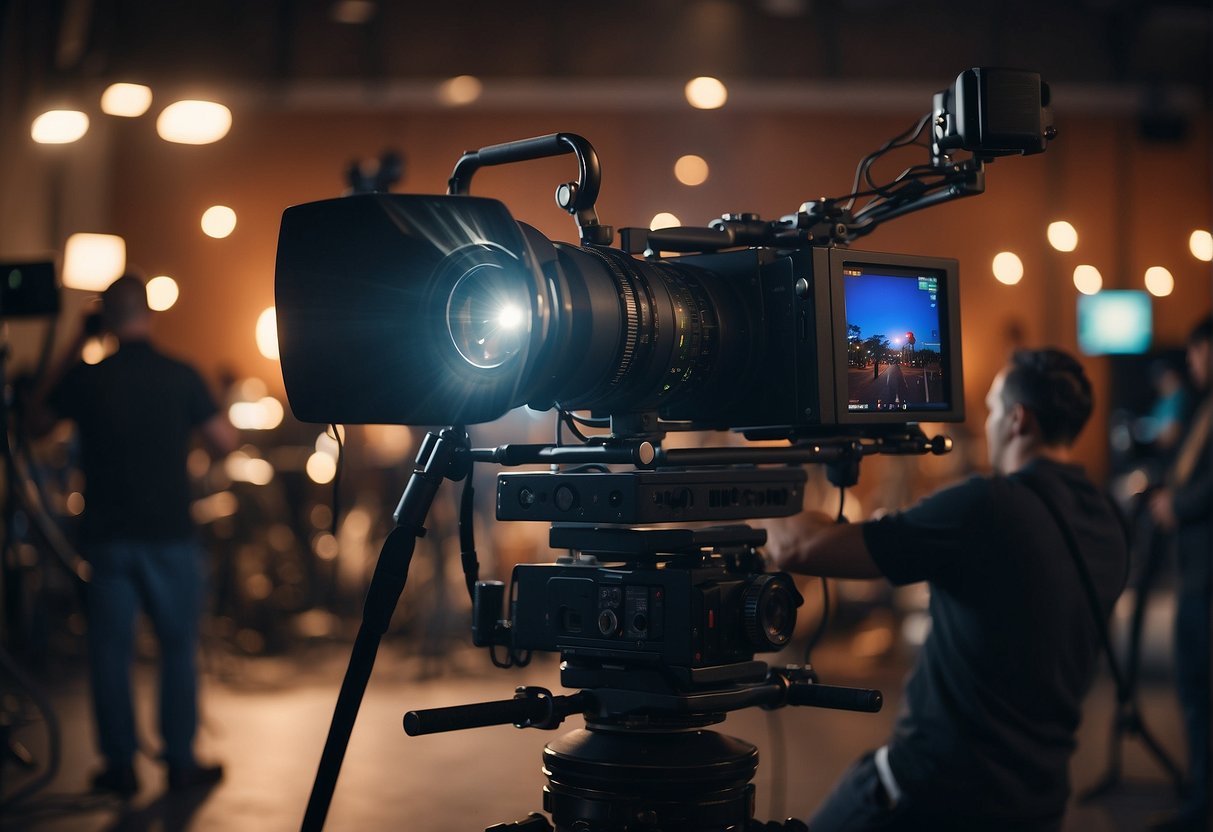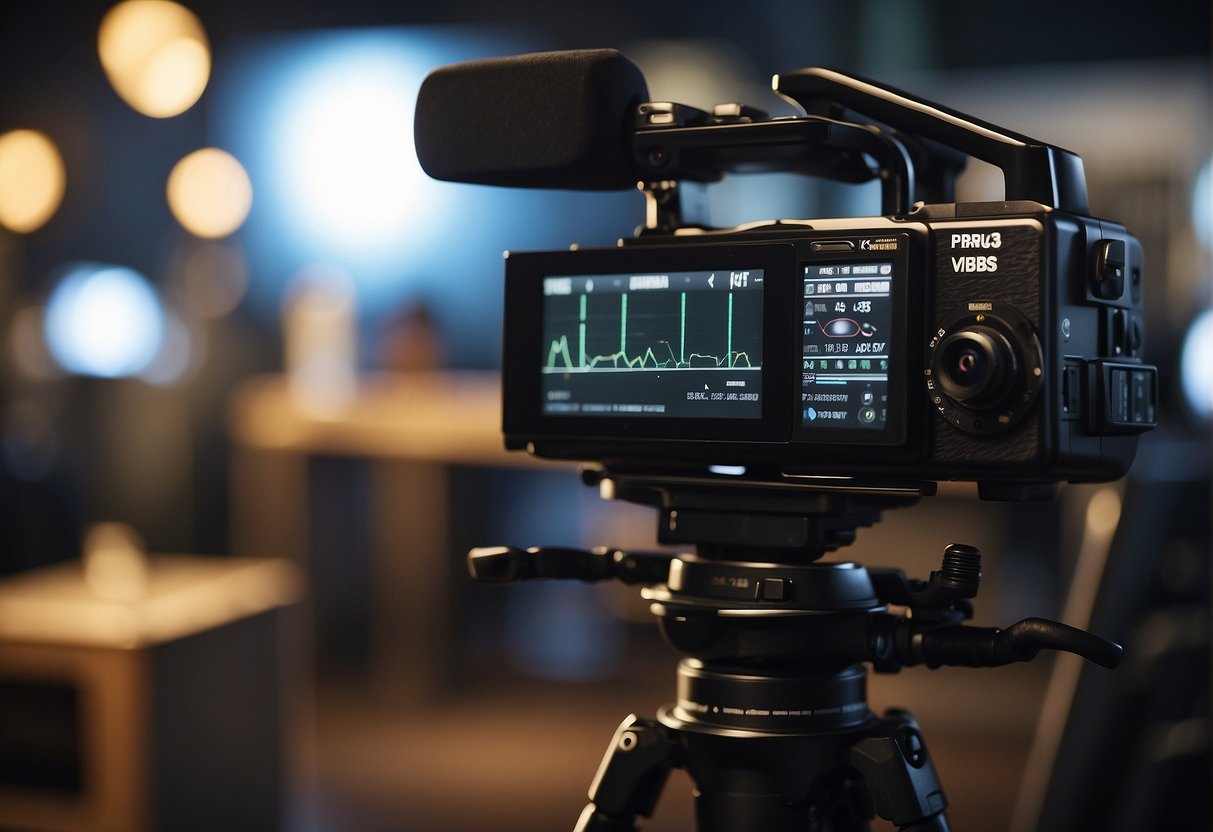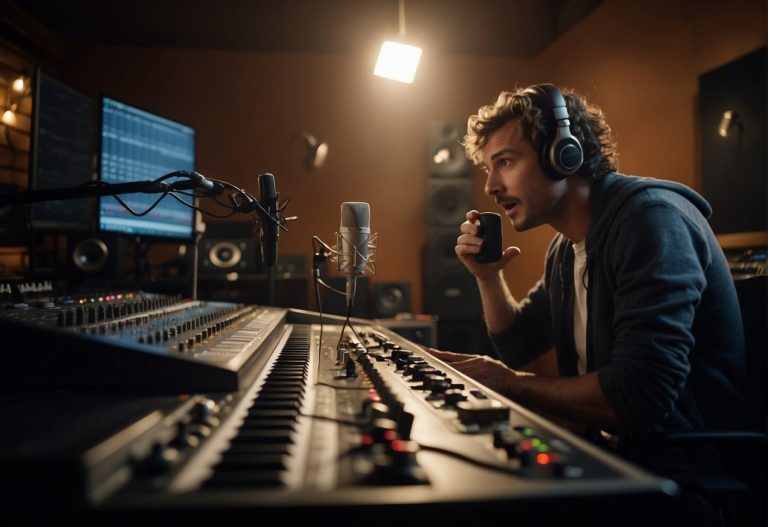How Much Does It Cost to Make a Music Video: A Comprehensive Guide

Making a music video can be an expensive undertaking, especially for independent artists who are just starting in the music industry. The cost of producing a music video can vary depending on various factors such as the concept, pre-production, production, post-production, and distribution. Therefore, it is essential to understand how much it costs to make a music video to ensure that you are getting the best value for your money.
The cost of making a music video can range from a few thousand dollars to hundreds of thousands of dollars, depending on the scope of the project. For instance, a DIY music video can cost anywhere from $500 to $5,000, while a professional music video can cost upwards of $40,000 or more. The cost of producing a music video can also depend on the location, equipment, crew, and talent involved. Therefore, it is crucial to plan and budget accordingly to avoid overspending or compromising on quality.
Key Takeaways
- The cost of making a music video can vary depending on various factors such as the concept, pre-production, production, post-production, and distribution.
- A DIY music video can cost anywhere from $500 to $5,000, while a professional music video can cost upwards of $40,000 or more.
- To ensure that you are getting the best value for your money, it is essential to plan and budget accordingly.
Concept and Pre-Production
The concept and pre-production phase of music video production is where the idea for the video is developed, planned, and budgeted. This phase is crucial to the success of the music video and can greatly affect the final cost.
Developing the Idea
The first step in pre-production is developing the idea for the music video. This involves brainstorming with the artist and their team to come up with a concept that fits the song and the artist’s brand. The idea should be unique, creative, and visually appealing.
Storyboarding and Planning
Once the concept is developed, the next step is storyboarding and planning. Storyboarding is the process of creating a visual representation of the video, shot by shot. This helps to plan out the logistics of the shoot, such as camera angles, lighting, and set design. Planning also involves determining the location(s) for the shoot, casting actors and extras, and scheduling the shoot days.
Budgeting
Budgeting is a crucial aspect of pre-production. The budget for the music video will depend on the complexity of the concept, the number of locations, the number of actors and extras, and the equipment needed. It is important to create a detailed budget that includes all expenses, such as equipment rental, location fees, and catering. A contingency budget should also be included to account for unexpected expenses.
Overall, the concept and pre-production phase of music video production is essential to the success of the video. Developing a unique and creative concept, storyboarding and planning the shoot, and creating a detailed budget will help ensure a successful and cost-effective music video.
Casting and Crew

When it comes to creating a music video, casting and crew are crucial elements that can significantly impact the final product. Hiring actors and dancers, as well as assembling the production team, require careful consideration to ensure that the video is produced within budget and meets the artistic vision of the artist or band.
Hiring Actors and Dancers
The cost of hiring actors and dancers can vary widely depending on their level of experience and the amount of time they will be needed on set. Professional actors can cost anywhere from $500 to $5,000 per day, while dancers can range from $250 to $1,500 per day. It is important to consider the number of actors and dancers needed for the video, as well as any additional costs such as wardrobe and makeup.
In some cases, artists may choose to use non-professional actors or dancers to save on costs. However, this can also impact the quality of the final product if the performers are not experienced or trained.
Assembling the Production Team
Assembling the production team for a music video can also be a significant cost. The team typically includes a director, producer, videographer, lighting technician, and other crew members. The cost of each crew member can vary depending on their level of experience and the length of the shoot.
The director is responsible for overseeing the creative vision of the video and can cost anywhere from $1,500 to $20,000 or more. The producer is responsible for managing the logistics of the shoot and can cost anywhere from $1,000 to $10,000. The videographer is responsible for capturing the footage and can cost anywhere from $500 to $5,000 per day.
Overall, the cost of casting and crew for a music video can range from a few thousand dollars to tens of thousands of dollars. It is important to carefully consider the artistic vision and budget when assembling the team to ensure that the final product meets expectations and stays within budget.
Filming Locations and Equipment

Scouting Locations
The location of a music video shoot can significantly affect the overall cost. A music video can be shot in various locations such as a studio, outdoor locations, or even a private property. The cost of each location varies depending on the location fees, permits, and the type of location itself. For instance, shooting in a studio can cost anywhere from $500 to $5,000 per day, whereas outdoor locations can cost less but may require permits that can cost up to $1,000. Therefore, it is important to scout for locations that fit the budget and vision of the music video.
Camera and Lighting Gear
The camera and lighting gear used in a music video shoot also affect the cost. A DSLR camera can be used for a low-budget music video, while a high-end camera can cost up to $50,000. The lighting gear used also affects the cost of the shoot. A gaffer and grip can be hired to set up and operate the lighting gear, which can cost up to $500 per day. A lighting technician can also be hired to operate the lighting gear, which can cost up to $1,000 per day.
It is important to note that the cost of equipment can vary depending on the type of music video being shot. For instance, a music video that requires complex lighting setups or special effects may require more expensive equipment and personnel. Therefore, it is important to determine the type of equipment needed for the music video shoot and budget accordingly.
Production and Filming
Directing and Shooting
The director plays a crucial role in the production of a music video. They are responsible for bringing the vision of the artist to life and ensuring that the final product meets the desired quality standards. The cost of hiring a director can vary depending on their experience and reputation. A highly experienced director may charge anywhere between $5,000 to $50,000 or more for their services.
The Director of Photography (DP) is responsible for the camera work and lighting. They work closely with the director to ensure that the visual style of the video matches the creative vision. The cost of hiring a DP can vary depending on their experience and the equipment they use. A highly experienced DP may charge anywhere between $2,000 to $10,000 or more per day.
Managing On-Set Logistics
Managing on-set logistics is essential to ensure that the production runs smoothly. This includes hiring a production crew, catering, wardrobe, props, and other production costs. The cost of hiring a production crew can vary depending on the size of the crew and the complexity of the shoot. A small crew may cost anywhere between $500 to $2,000 per day, while a larger crew may cost upwards of $5,000 per day.
Catering is an essential part of any production. It keeps the crew and talent energized and focused throughout the day. The cost of catering can vary depending on the number of people on set and the type of food provided. A simple lunch may cost anywhere between $10 to $20 per person, while a more elaborate meal may cost upwards of $50 per person.
Wardrobe and props are also essential components of a music video. The cost of wardrobe and props can vary depending on the complexity of the shoot and the type of items required. A simple wardrobe may cost anywhere between $500 to $1,000, while a more elaborate wardrobe may cost upwards of $10,000. Props can also be expensive, with costs ranging from $500 to $5,000 or more.
Overall, the cost of production and filming for a music video can vary greatly depending on the scope and complexity of the project. It is essential to have a clear understanding of the production budget and to work closely with the production team to ensure that all aspects of the shoot are managed effectively.
Post-Production and Editing
After the filming is done, the post-production process begins. This involves editing and adding special effects to the footage. The cost of post-production editing can vary depending on the complexity of the video and the experience of the video editor.
Editing and Special Effects
The editing process involves selecting the best footage, cutting out unwanted parts, and arranging the remaining footage in a way that tells a story. The video editor may also add special effects to enhance the visual appeal of the video. The cost of editing and special effects can range from $500 to $10,000 depending on the complexity of the video and the experience of the video editor.
If the video requires complex visual effects, such as CGI or green screen, then the services of a VFX artist may be required. The cost of hiring a VFX artist can range from $500 to $5,000 per day depending on their experience and the complexity of the effects required.
Color Correction and Finishing Touches
Color correction is the process of adjusting the colors in the video to make it look more visually appealing. This involves adjusting the brightness, contrast, and saturation of the footage. The cost of color correction can range from $500 to $2,000 depending on the complexity of the video and the experience of the colorist.
After color correction, the video will go through a finishing process where the audio and video are synced, and the final touches are added. This can include adding titles, credits, and other visual elements. The cost of finishing touches can range from $500 to $2,000 depending on the complexity of the video and the experience of the editor.
Overall, post-production editing costs can add up quickly, and it’s important to budget accordingly. It’s essential to work with experienced professionals who can deliver high-quality work within your budget.
Distribution and Marketing
Once the music video is complete, the next step is to distribute and market it effectively. This is where the video can reach a wider audience and potentially gain more views and engagement.
Online Platforms and Social Media
One of the most popular platforms for music video distribution is YouTube. It is a free platform that allows artists to upload their videos and reach a large audience. Other video platforms include Vimeo, Vevo, and Dailymotion.
Social media is also an important aspect of music video distribution. Facebook, Instagram, and Twitter are some of the most popular social media platforms where artists can share their videos and reach their followers.
Marketing Strategies and Outreach
Marketing strategies and outreach are crucial for promoting the music video. One effective strategy is to collaborate with influencers and bloggers who have a large following on social media. This can help to reach a wider audience and increase engagement.
Paid advertising is another option to consider. Platforms like YouTube and Facebook offer advertising options that can help to promote the video to a targeted audience.
In conclusion, effective distribution and marketing can help to increase the visibility and engagement of a music video. Utilizing online platforms, social media, and marketing strategies can help to reach a wider audience and promote the video effectively.
Frequently Asked Questions
What is the typical budget range for a low-budget music video?
The cost of producing a low-budget music video can range from $2,000 to $5,000 on average, with a small crew and only one location. This price can vary depending on factors such as location, equipment, and crew size.
What are the expected costs for producing a professional-grade music video?
For a professional-grade music video, the cost can range from $20,000 to $50,000 or more. This price includes expenses such as location rental, equipment, crew, and post-production. The final cost will depend on the complexity of the video, the number of locations, and the quality of the equipment used.
Can you provide a breakdown of expenses typically involved in making a music video?
The expenses involved in making a music video include equipment rental, location rental, crew salaries, post-production, and special effects. The cost of each of these expenses can vary depending on the project’s scope and complexity.
What are the cost considerations for creating an animated music video?
Creating an animated music video can be expensive, with costs ranging from $5,000 to $50,000 or more. The cost will depend on the complexity of the animation, the length of the video, and the quality of the animation.
How much do independent artists generally spend on their music videos?
Independent artists typically spend anywhere from $2,000 to $10,000 on their music videos. This budget allows for a basic video with a small crew and one location.
What are the average production costs for a rap music video?
The average cost of producing a rap music video is around $15,000 to $30,000. This cost includes expenses such as location rental, equipment rental, crew salaries, and post-production. The final cost will depend on the complexity of the video, the number of locations, and the quality of the equipment used.





